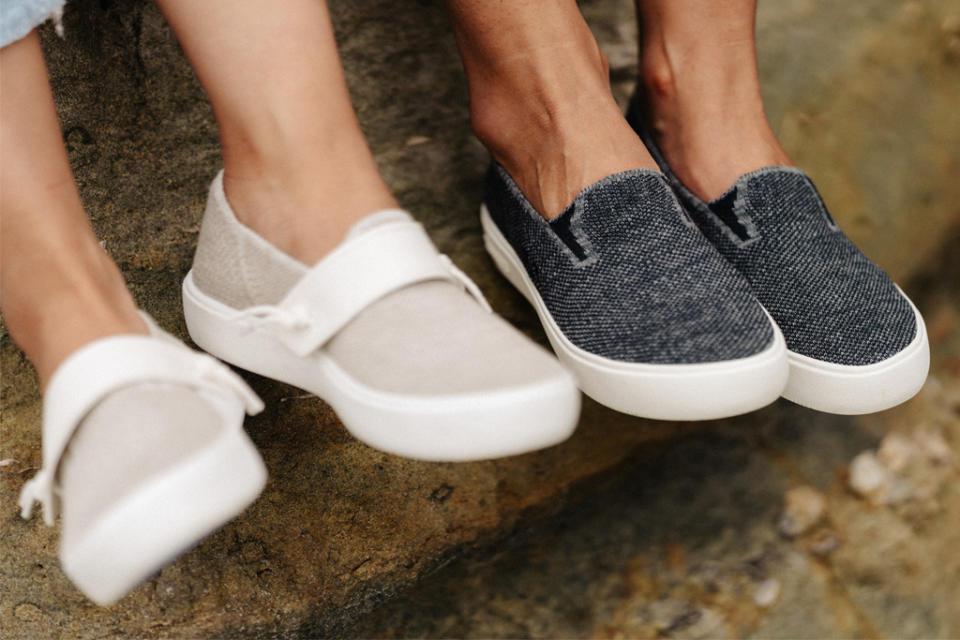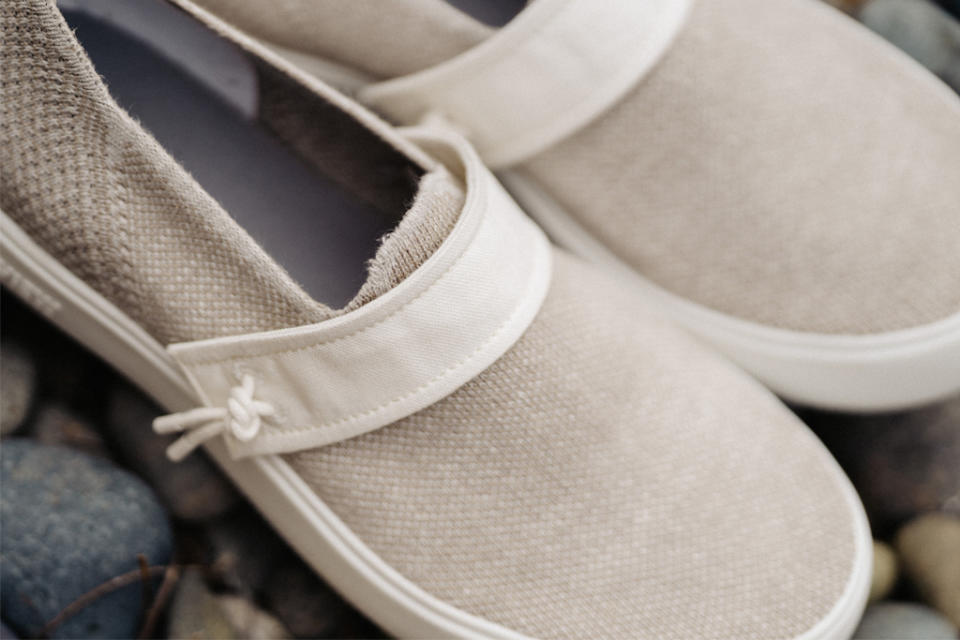Why It Took 6 Years and $15 Million for Blueview to Develop This Sustainable Sneaker

A footwear executive and an algae expert meet while surfing in Southern California. It isn’t the setup for a joke, but the origin story for Blueview, a new sustainable brand that recently unveiled its first creation: a casual vegan slip-on that it says is 100% biodegradable.
The Blueview Pacific sneaker, retailing for $135, is made entirely of plant-based materials that can break down and return to the soil. Its knit upper is comprised of yarn made of hemp, cotton, jute and Tencel, while its insole and outsole are crafted out of Blueview’s proprietary Soleic compound, a polyurethane foam derived from algae.
More from Footwear News
These Brands Are Celebrating Earth Day With New Shoe Releases, Initiatives and More
Gianvito Rossi Takes Big Step in Latest Sustainability Efforts
Twisted X Launches No-Glue Shoe Created Without Chemical Adhesives
This sort of dust-to-dust product lifecycle is what many footwear experts have been striving for in recent years, to help minimize the immense waste created by the industry. According to the Footwear Distributors and Retailers of America, roughly 427.5 million pairs of shoes are thrown into landfills each year.
“Sometimes it takes startups to do the game-changing innovation,” said Blueview president Tom Cooke, a former executive with Vans and Reef, who leads the company alongside CEO Stephen Mayfield, a longtime biotechnologist.
Cooke added, “I’ve spent 25 years in this industry and I’ve seen firsthand the negative consequences that we create as an industry. As surfers, Steve and I are swimming in the problem. So we felt this moral imperative to change the game. It was time a long time ago to address the pollution crisis, but now it’s a demand on everybody to revolutionize footwear, design and manufacturing.”

Courtesy of Blueview
Cooke said the pivotal element to Blueview shoes is the Soleic foam, which is an eco-friendly alternative to current sole materials made from petroleum-based polyurethane. The foam was developed over the course of six years by Mayfield and his team at the University of California, San Diego, supported by $15 million in government grants.
Mayfield has worked in the biotech field for decades exploring new uses for algae. He first focused on biofuel, but soon abandoned that path. “The reason was we were simply making too many valuable products from algae to ever think about burning it in a gas,” he recalled.
Among those valuable products were polymers for bio-based plastics. And naturally, the first thing his SoCal team made with the polymers was a surfboard. “It went viral, and then we got calls from a couple of shoe companies that said, ‘If you can make rigid polyurethane, you can make soft polyurethane, and that’s an enormous market.’ We looked into it, and they were right,” said Mayfield.
Among their goals, the team was striving to create an outsole material that was biodegradable and recyclable. So far, they’ve accomplished the former and are exploring a process for the latter.
While Mayfield focused on the shoe outsole, Cooke worked with engineers and sourcing experts for a year to develop the shoe’s trademarked Plantknit upper, which is 100% plant-based. “The process was a combination of making a yarn that could go into the machine and not clog the machine or snap the yarn. And then the machine itself had to be top notch to be able to handle a yarn that didn’t have any synthetic content,” said Cooke.

Courtesy of Blueview
Over the course of its development, the Pacific sneaker has been subjected to rigorous testing against ASTM D5338 standards to ensure that it delivers on its biodegradable promises. Mayfield said that if placed in a properly maintained compost, the shoe components should biodegrade in two months (for the upper), three months (for the insole) and six months (for the outsole).
But the founders are quick to point out the shoe won’t break apart on your feet. Blueview sent the sneaker to the Heeluxe lab in Goleta, Calif., to gauge its ability to withstand wear and tear. “They put our shoe through [a test] designed to simulate one year of wear, and we beat the industry average in all durability characteristics,” said Cooke.
Andy Polk, SVP at FDRA, noted that biodegradable footwear helps solve a big environmental issue for the shoe industry. “The goal is to keep more shoes out of landfills, but also to make shoes that if thrown away leave no impact” said Polk.
Many brands have been working to address circularity and the end-life of products by introducing recycling and refurbishment programs for used footwear. While important steps, the challenge is that consumers won’t necessarily participate, so shoes still end up landfills.
To that point, Mayfield said Blueview customers can put their sneakers into their home compost piles “if they have a good one,” but the brand will soon begin collecting shoes to send to an industrial composting facility. “The main thing we say to customers is, ‘Absolutely don’t throw them in your trash.’ Nothing degrades in a landfill,” he said.
Best of Footwear News
Sign up for FN's Newsletter. For the latest news, follow us on Facebook, Twitter, and Instagram.

